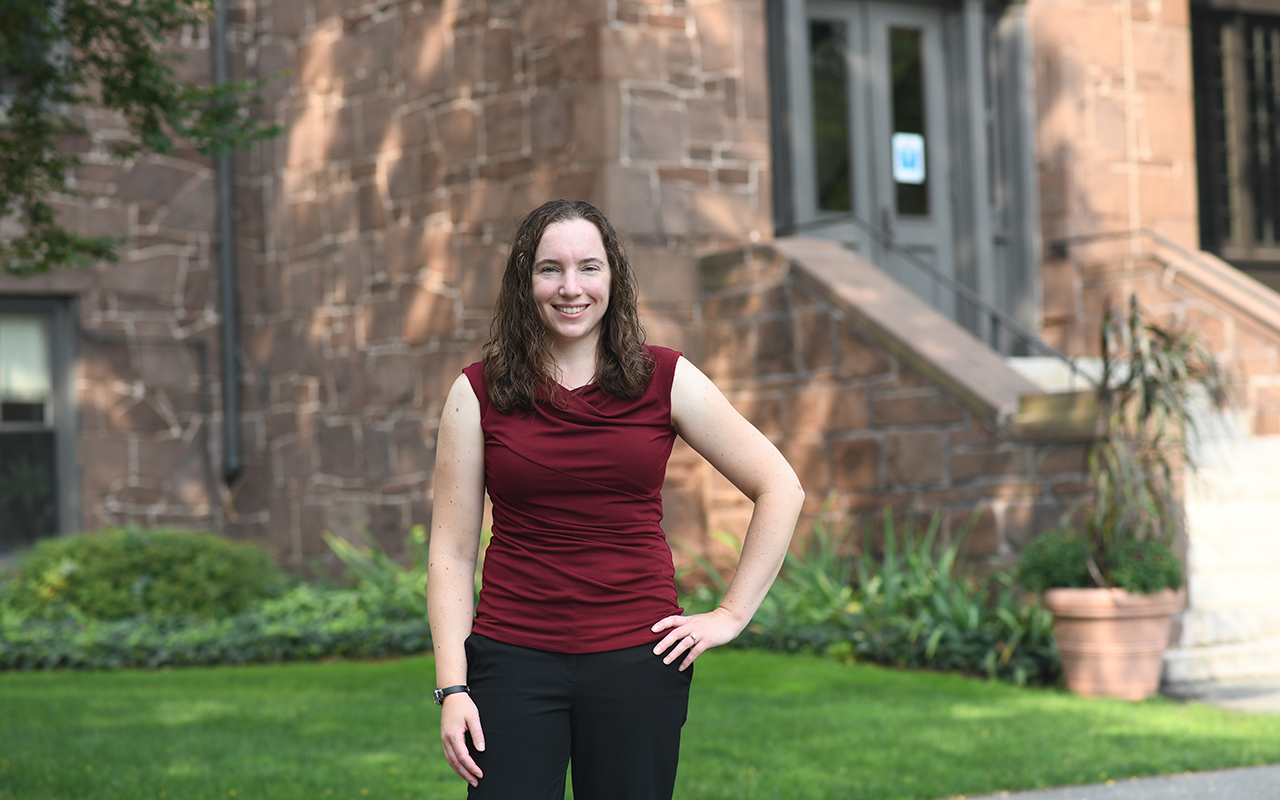New Research to Help Create Renewable Energy Storage

A new Wesleyan research project will explore the possibility that more chemical elements than previously thought could be used to help create inexpensive and renewable energy storage technologies.
Associate Professor of Chemistry Michelle Personick’s lab was the recipient of a three-year grant from the U.S. Department of Energy to encourage research into clean-energy technologies and low carbon manufacturing. Researchers at 54 universities and 11 National Laboratories received awards in late August.
Platinum group elements (PGE) like platinum, palladium, and rhodium are crucial in the production of many energy storage technologies, like fuel cells and the sustainable production of liquid fuel using renewable energy. However, these elements are scarce, expensive, and tend to be found in conflict regions, Personick said.
She believes it is possible to replace these materials with those that are more commonly available, including copper, iron, nickel and cobalt. However, those materials tend not to work as well in energy storage.
“Replacing platinum group elements with more sustainable metals is a non-trivial challenge, in part because making materials with these other compositions requires disruptively different synthetic approaches than those used for PGE,” according to the abstract for Personick’s research.
Using real-time electrochemical measurements, Personick will be able to do a careful analysis to identify novel reaction conditions that would work for making shaped nanoparticles from these more plentifully available elements. Careful tuning of the size and shape of these nanomaterials is needed to control how molecules break apart or combine together on the nanoparticles’ surface to generate energy or fuels.
“We are developing a new approach and a new technique, using electrochemistry, measuring the flow of electrons or applying a flow of electrons.” Personick said.
She has created a tool to be able to monitor those reactions in real time. “This will allow us to control reaction chemistry in a way that is well outside the limits of what is possible with existing methods and it is an important step in moving towards materials sustainability,” according to the proposal’s abstract.
The process of designing nanoparticle syntheses has largely been trial and error, Personick said. Scientists found what worked almost by accident. Personick’s lab is hoping to generate fundamental knowledge that can then be repurposed by engineers and chemists into specific sustainable technologies in the future.
“We hope to be able to translate those processes to materials where we don’t have that kind of control now,” Personick said. “We don’t have a ton of syntheses for renewable materials. We need to step back from the trial-and-error approach so we actually, fundamentally understand what is happening and then translate it.”

